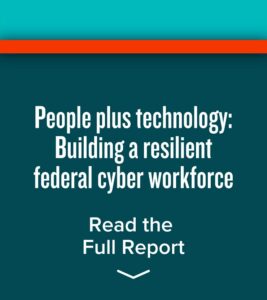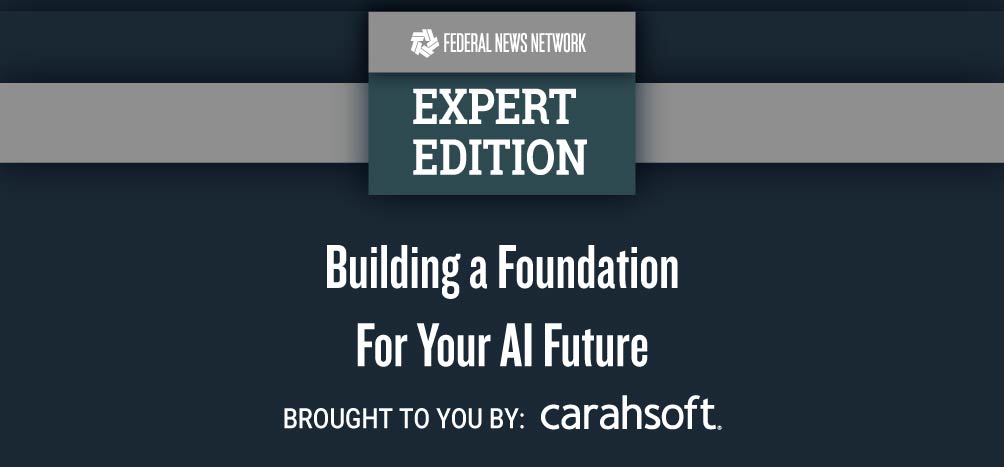It might seem like agencies are hesitant to adopt artificial intelligence. But really, it is quite the opposite. As Lori Wade, the Intelligence Community’s chief data officer, put it: “It is no longer just about the volume of data, it is about who can collect, access, exploit and gain actionable insight the fastest.” The realization is clear: Humans alone cannot keep pace. They need AI so they can make decisions based on the most relevant and most current information — and make those decisions in a timely manner. It is really as simple as that. Download the guide, “Building the Foundation for Your AI Future,” to pick up pointers on data management and AI, plus take a glimpse at the latest technology developments, tips for best practices and an explanation of the early value that AI is delivering to agencies across government.
How to Revolutionize Government Translation with Generative AI
“In situations where accurate and timely translations are crucial, the shortage of qualified and vetted linguists poses significant challenges. Equally, non-linguist analysts are not equipped with secure, at-desk tools to translate foreign language material at the speed of relevance. For example, during the ongoing war in Ukraine, there has been a scarcity of linguists available to provide real-time updates on the ground. This shortage not only has affected the ability to gather vital intelligence but also hindered the timely dissemination of information to national security and defense agencies in the U.S. and abroad.”
Read more insights from Jesse Rosenbaum, Vice President of Business Development and National Security at Lilt.
How Graph Databases Drive a Paradigm Shift in Data Platform Technology
 “Federal agencies are awash in data. With recent modernization efforts, including the wide-scale adoption of cloud platforms and applications, it is easier than ever for agencies to receive streaming data on everything from logistics to finances to cybersecurity. But that volume of data requires new solutions to process and analyze it. Older methods like SQL and NoSQL simply are not up to the task of analyzing all of the connections between the government’s many massive databases. That is where the new graph paradigm of data platform technology comes in.”
“Federal agencies are awash in data. With recent modernization efforts, including the wide-scale adoption of cloud platforms and applications, it is easier than ever for agencies to receive streaming data on everything from logistics to finances to cybersecurity. But that volume of data requires new solutions to process and analyze it. Older methods like SQL and NoSQL simply are not up to the task of analyzing all of the connections between the government’s many massive databases. That is where the new graph paradigm of data platform technology comes in.”
Read more insights from Michael Moore, Principal for Partner Solutions and Technology at Neo4j.
How Agencies Can Upskill in AI to Achieve a Data Mesh Model
“Data mesh behavior actually goes a step further. AI has become so easy to use, business owners can actually join in the development alongside the data scientists. Therein lies the challenge: Upskilling subject matter experts across an entire organization is a big lift. The way it works best is to start with a center of excellence, a small group of people who begin working with business owners across the enterprise, office by office. They can then prove the value and evangelize it, and then the agency can move to a hub-and-spoke model, where the data scientists are co-developing alongside business owners. As successes pile up, the data scientists can take a step back and allow frontline workers to do the development, governing the new data products on their own.”
Read more insights from Doug Bryan, Field Chief Data Officer at Dataiku.
How Agencies Can Build a Data Foundation for Generative AI
“Generative artificial intelligence tools are making waves in the technology world, most famously ChatGPT. Although the code of these tools is significant, their real power stems from the data they are trained on. Gathering and correctly formatting the data, then transforming it to yield accurate predictions, often represents the most challenging aspect of developing these tools. Federal agencies that want to start leveraging generative AI already have massive amounts of data on which to train the technology. But to successfully implement these tools, they need to ensure the quality of their data before trusting any decisions they might make.”
Read more insights from Nasheb Ismaily, Principal Solutions Engineer at Cloudera.
How to Democratize Data as a Catalyst for Effective Decision-Making
“One of the key best practices in the Office of Management and Budget’s Federal Data Strategy calls for using data to guide decision-making. But that is easier said than done when the ability to analyze the data, much less access it, is limited to an agency’s often overworked and understaffed data science specialists. But now that every line of federal business has their own data silo and a mandate to use that data to guide decisions, agencies need a way to democratize access to that data and empower every federal employee to become an analyst.”
Read more insights from Kevin Woo, Director of Federal Sales at Alteryx.
Download the full Expert Edition for more insights from these artificial intelligence leaders, additional government interviews, historical perspectives and industry research.








